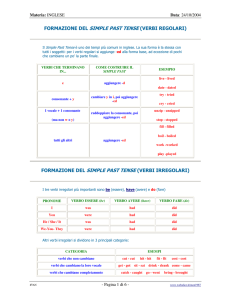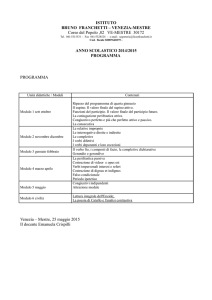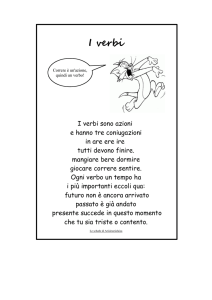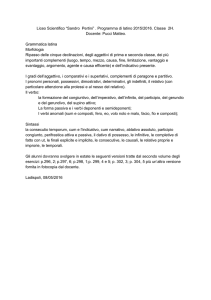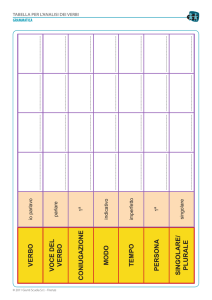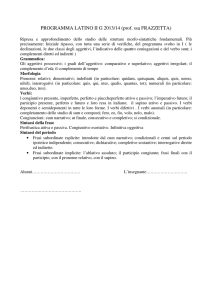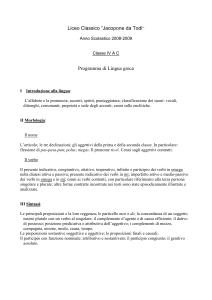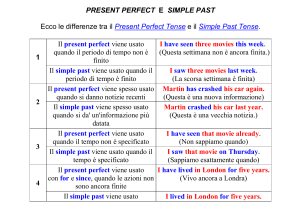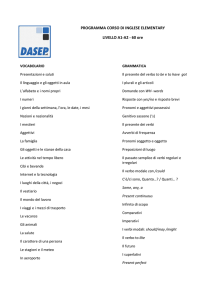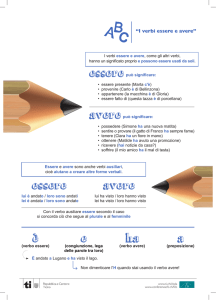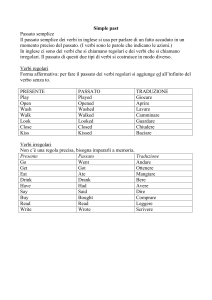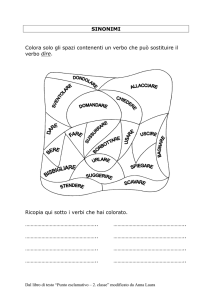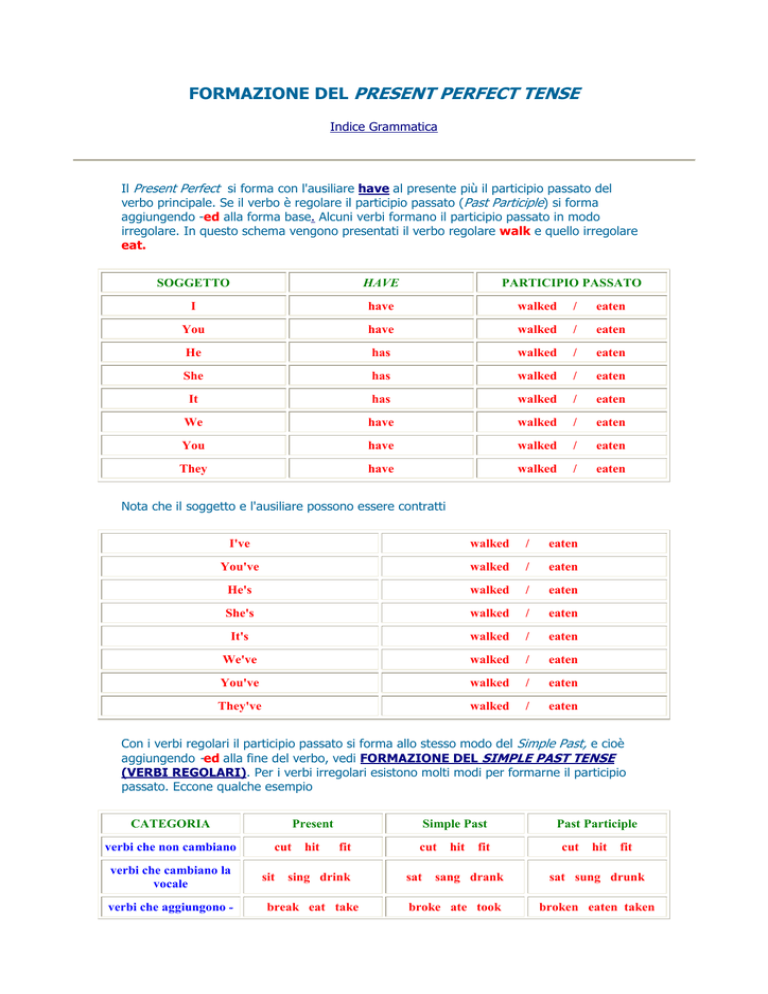
FORMAZIONE DEL PRESENT PERFECT TENSE
Indice Grammatica
Il Present Perfect si forma con l'ausiliare have al presente più il participio passato del
verbo principale. Se il verbo è regolare il participio passato (Past Participle) si forma
aggiungendo -ed alla forma base. Alcuni verbi formano il participio passato in modo
irregolare. In questo schema vengono presentati il verbo regolare walk e quello irregolare
eat.
SOGGETTO
HAVE
PARTICIPIO PASSATO
I
have
walked
/
eaten
You
have
walked
/
eaten
He
has
walked
/
eaten
She
has
walked
/
eaten
It
has
walked
/
eaten
We
have
walked
/
eaten
You
have
walked
/
eaten
They
have
walked
/
eaten
Nota che il soggetto e l'ausiliare possono essere contratti
I've
walked
/
eaten
You've
walked
/
eaten
He's
walked
/
eaten
She's
walked
/
eaten
It's
walked
/
eaten
We've
walked
/
eaten
You've
walked
/
eaten
They've
walked
/
eaten
Con i verbi regolari il participio passato si forma allo stesso modo del Simple Past, e cioè
aggiungendo -ed alla fine del verbo, vedi FORMAZIONE DEL SIMPLE PAST TENSE
(VERBI REGOLARI). Per i verbi irregolari esistono molti modi per formarne il participio
passato. Eccone qualche esempio
CATEGORIA
verbi che non cambiano
verbi che cambiano la
vocale
verbi che aggiungono -
Present
cut
sit
hit
Simple Past
fit
sing drink
break eat take
cut
sat
hit
fit
sang drank
broke ate took
Past Participle
cut
hit
fit
sat sung drunk
broken eaten taken
en
verbi che cambiano
completamente
catch bring teach
caught brought taught caught brought taught
Questa grammatica è a cura di Raffaele Nardella
http://www.nspeak.com/newbasic/grammatica/grammar.htm

